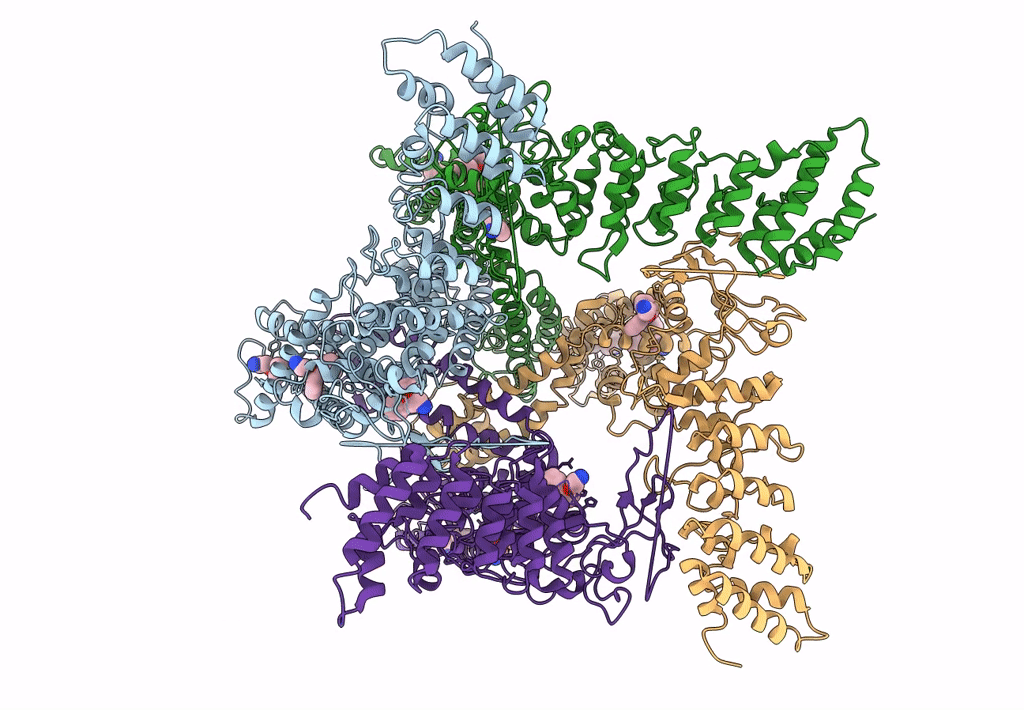
Deposition Date
2018-06-25
Release Date
2018-09-05
Last Version Date
2025-05-21
Entry Detail
PDB ID:
6DVZ
Keywords:
Title:
Cryo-EM structure of mouse TRPV3-Y564A in complex with 2-Aminoethoxydiphenyl borate (2-APB)
Biological Source:
Source Organism:
Mus musculus (Taxon ID: 10090)
Host Organism:
Method Details:
Experimental Method:
Resolution:
4.24 Å
Aggregation State:
PARTICLE
Reconstruction Method:
SINGLE PARTICLE


